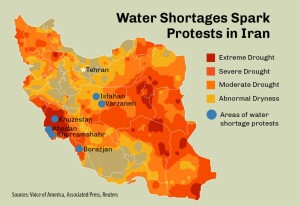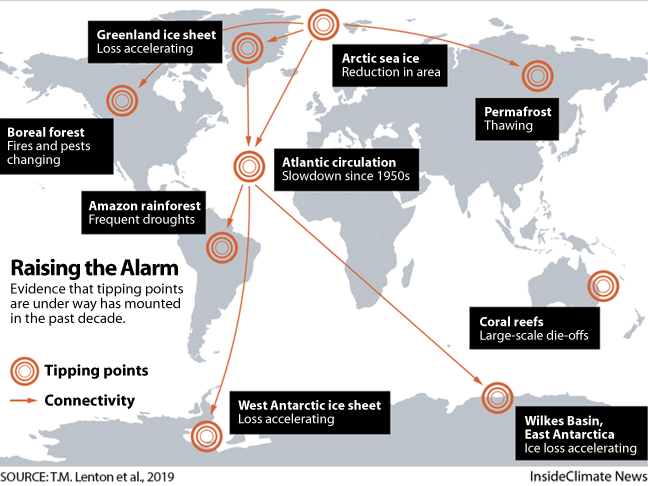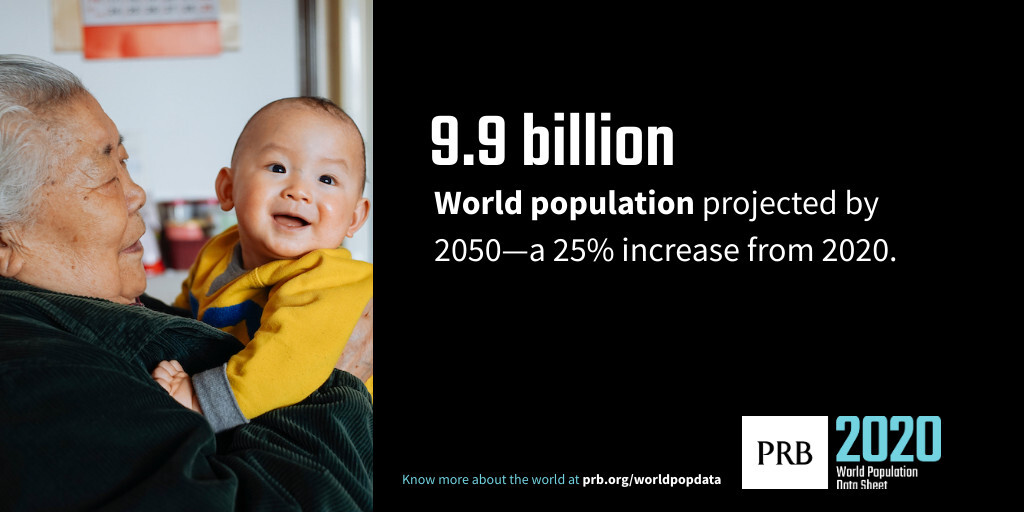8 Billion People, Reproductive Health and Planetary Tipping Points
Jul 10th, 2020 | By admin | Category: Other ResourcesBy Suzanne York.
The news comes fast and furious these days. Breaking stories, shocking tweets, and crucial studies all demand our attention. Climate change, pandemics, environmental degradation, racial injustice, inequality, human rights violations – each of these alone needs to be understood and thoroughly addressed.Beyond that though, it’s also important, maybe more than ever, to understand how all of these issues are linked, and are driven by the actions of humanity. And diving deeper, that means understanding how the needs of 7.8 billion people is altering lives and the health of the planet.
For decades now, the topic of population growth has been mostly ignored and considered too controversial to tackle. Yet the planet is in global overshoot and we are using up resources faster than Nature can replenish them. What will it take to acknowledge the impacts of human population growth? Calamitous events and grave problems will bring the issue more to the forefront, whether we want it to or not. How we approach it can mean the difference between a thriving world or a planet mired in chaos.
Fighting for Reproductive Health & Justice
One reason discussing population growth is seen as taboo, in a nutshell, is because it involves private, individual decisions (on sex and reproduction) and in the past, efforts to lower population involved gross violations of women’s rights, as well as men’s rights. There are other reasons too, such as overconsumption and inequality that can’t remain overlooked.
So here we are in 2020, and the battle for reproductive rights and justice is still being fought, in both developing and developed countries.
Just this week the U.S. Supreme Court ruled that employers and colleges could opt out of providing free birth control due to religious or moral objections. A hallmark of the Affordable Care Act is having insurance plans cover contraceptives at no additional cost. Now, if an employer objects to this, they could opt out of the requirement that contraception be included in an employee’s health insurance plan, forcing more women to take on paying for contraceptives out-of-pocket. This can be a burden for many women, resulting in more unintended pregnancies. Almost half (45%) of the 6.1 million annual pregnancies in the United States are unintended.
On the other side of the world, Iran announced last month that its state hospitals and clinics will no longer perform vasectomies or supply contraceptives. Conservatives in Iran are concerned about the country’s low birthrate (1.7 children per woman) and aging population, and for many years now have been trying to limit access to family planning services. Yet many Iranian women have been delaying starting a family in order to pursue higher education.
Ironically, Iran is known for implementing a very successful family planning program in the 1990s. After the war with Iraq, Iranian leaders saw their rapid population growth as an obstacle to development and instituted a national family planning program. Its principal goals encouraged women to wait three to four years between pregnancies and discouraged childbearing for women younger than 18 or older than 35. It also called for limiting family size to three children.
The current population in Iran stands at over 81 million people, and the nation faces a looming water crisis and potential instability due to droughts. The Washington Post once wrote that “Iran is headed for a water shortage of epic proportions,” and other experts have stated the need for Iran to curb its population growth due to the threat of water scarcity.
Meeting the needs of women and men for reproductive health services is key to a stable and healthy population, for all countries and help to better cope with the climate crisis. Globally, in developing regions, there are 214 million women and girls who want to prevent or delay pregnancy but do not have access to contraceptives, or lack information or money. Some times they face gender inequality or cultural barriers. If women had access to contraceptives in developing countries, unwanted pregnancies could drop from 89 million a year to 22 million per year.
Tremendous gains in reproductive health have been made since the birth control pill was introduced; we can’t afford to go backwards. Every child should be wanted, and women and men should have the ability to make the best decisions for themselves and their families. Providing family planning services should be an easy choice; it’s inexpensive in the scheme of things and it’s the right thing to do.
Environmental Tipping Points
Focusing on reproductive rights and implementing voluntary family planning as a path to get to a healthy population is one key solution. Another is paying attention to what the planet is telling us. COVID-19 aside, Mother Nature is practically screaming at humans to change course and prioritize protecting the environment. If we all consumed like Americans, we would need four Earths. Too many of us live beyond our means, threatening life of Earth, not just for our fellow human beings but also flora and fauna.
One million animal and plant species are on the verge of extinction. Some of the planet’s most beloved and iconic animals could disappear in the very near future, due to humans. It’s a biodiversity crisis that the world may never recover from.
Last year, scientists warned that our civilization may have passed a number of climate ‘tipping points’ and is facing an ‘existential threat.’ The graph below depicts our planetary tipping points:
One of the tipping points is the release of methane from thawing permafrost, a frightening scenario to contemplate. But it’s already happening in the Arctic. This summer, Siberia has been experiencing extreme heat, with temperatures cracking 100 degrees and forest fires breaking out. The melting permafrost could release a massive amount of methane.
Turning Point?
As our lives have been turned upside down due to COVID-19, we might want to take a moment and think about what we can learn from this predicament. Many of us are consuming less, driving and flying less, spending more time out in nature and gardening, and if we’re lucky, spending time with loved ones. Animals are venturing out into spaces normally occupied by people.
The pandemic has showed us that our relationship to Nature is broken, and that humans have for too long exploited the planet’s resources. In a world of nearly 8 billion people, headed towards close to 10 billion by the year 2050, it’s time to stop ignoring population growth. By talking about it, we can discuss and implement the best solutions that support and respect people and the planet, many of which are already on hand.
July 11th is World Population Day. It’s a good time to have a conversation on an issue that deserves more attention, and we can make more progress on rights, health and environment by acknowledging it. Population growth is actually an easy problem to solve, when we support reproductive health and rights, education for girls, sustainable livelihoods, and reduce consumption. When we do all of that, in conjunction with having a lighter environmental footprint and respecting Nature, we will experience an increase in human well-being and live in balance with the Earth. Now that’s something to talk about!
Suzanne York is Director of Transition Earth.

![[image:www.nayataaza.cm]](http://populationgrowth.org/wp-content/uploads/2020/07/World-Population-Day-2020-795x385-300x145.jpg)
![[photo:(American Life League / Flickr)]](http://populationgrowth.org/wp-content/uploads/2020/07/birth-control-protest-sign-300x137.jpg)


